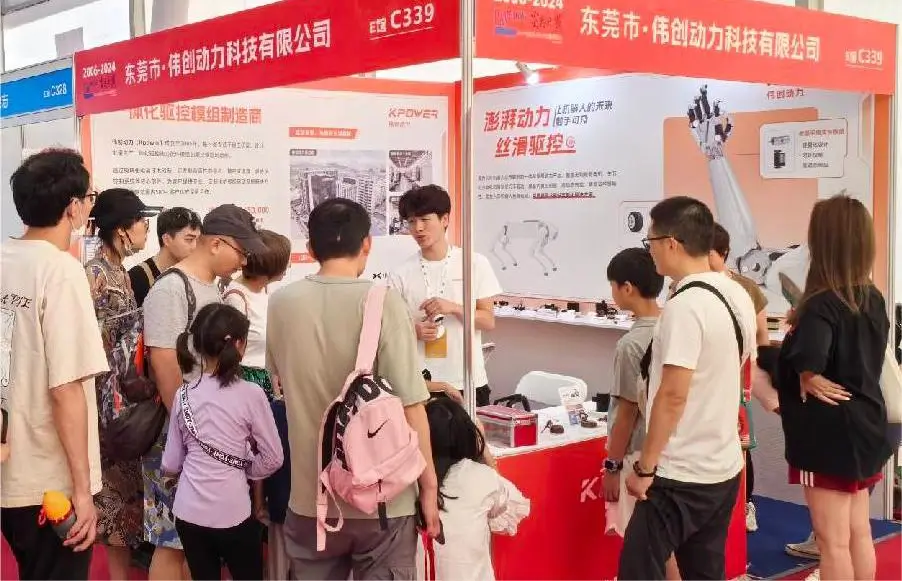The Rise of the 360-Degree Servo Motor: Redefining Motion Mastery
In the world of robotics and automation, the insatiable quest for precision, reliability, and versatility has led engineers and designers to explore increasingly sophisticated motor solutions. Among these innovations, the 360-degree servo motor stands out as a game-changer, opening doors to new possibilities in countless applications—from robotic arms to aerospace equipment.

But what exactly is a 360-degree servo motor, and how does it differ from traditional servo systems? To understand its significance, we need to look beyond the basic motor principle and examine the unique features that empower this device to deliver seamless, continuous rotation.
Understanding the Basics: What Is a 360 Degree Servo Motor?
Unlike conventional servo motors that are designed for limited angular motion—typically around 180 or 270 degrees—the 360-degree servo motor can rotate endlessly in either direction without losing position feedback. This capability makes it ideal for tasks requiring full rotation or continuous movement, such as steering systems, camera pans, and multi-directional robotic joints.
The core innovation behind these motors is their integration of a continuous rotation mechanism with high-precision position feedback. They often incorporate brushless DC (BLDC) motors or brushed motors with specialized encoders and controllers that facilitate limitless rotation while maintaining accurate control.
Architectural Highlights and Technical Aspects
One key to the 360-degree servo motor is its feedback system. Unlike simple rotary motors, these units embed encoders—high-resolution sensors that constantly monitor the rotor’s position. This real-time feedback ensures that the motor’s controller can precisely govern motion, speed, and position, regardless of how many revolutions it completes.
Furthermore, many 360-degree servo motors employ closed-loop control systems, which constantly adjust power delivery based on the feedback. This results in a smooth, accurate rotational motion that can be fine-tuned for specific loads or environmental conditions.
Another important feature is the motor's durability and reliability. Since these motors are often used in demanding environments, manufacturers reinforce them with robust materials and thermal management solutions to prevent overheating during continuous operation.
Applications Across Industries
The versatility of 360-degree servo motors makes them a popular choice across a broad spectrum of industries:
Robotics: From humanoid robots to industrial automation, these motors allow robotic joints to move freely and precisely, enabling complex movements and manipulation.
Aerospace: In satellite positioning and aircraft control surfaces, the ability to rotate continuously under tight control protocols is crucial for maneuvering and stability.
Cameras & Film Equipment: Smooth, endless pan and tilt movements create professional-grade footage, all powered by the seamless rotation of these servo motors.
Automotive: They are pivotal in adaptive steering systems, where full rotation and high precision contribute to safety and performance.
Medical Devices: Surgical robots and diagnostic equipment utilize these motors for delicate, precise maneuvering in confined spaces.
The Advantages That Make 360-Degree Servo Motors a Cut Above
What sets these motors apart from their limited-rotation counterparts?
Unlimited Rotation: The most obvious benefit, allowing for complex movement patterns without mechanical stops or interference.
High Precision: Encoders and sophisticated controllers provide position resolution often down to fractions of a degree.
Enhanced Durability: Designed for continuous operation, they often feature heat dissipation and wear-resistant components.
Flexible Control: Programmable parameters enable customization of acceleration, deceleration, and response times, accommodating various operational needs.
Compact Design: Despite their advanced functionality, many models are compact, making them suitable for tight spaces and embedded applications.
Challenges and Considerations
While the promise of endless rotation is enticing, designing and deploying 360-degree servo motors also present some challenges. For instance, precise calibration of feedback systems is essential to avoid drift or inaccuracies over long-term use. Additionally, power consumption can be higher in continuous rotation modes, which must be managed through appropriate hardware solutions.
Moreover, the integration of these motors into complex systems requires careful planning—matching torque requirements, selecting compatible controllers, and ensuring adequate cooling. Despite these considerations, ongoing innovations in motor design and electronics are continually reducing barriers to adoption.
Eager to discover how these motors are transforming real-world applications? In Part 2, we’ll delve into case studies, future trends, and expert insights that highlight the boundless potential of 360-degree servo motors. Stay tuned for a deeper exploration of how this technology is reshaping the landscape of automation and beyond.
Leveraging innovations in modular drive technology, Kpower integrates high-performance motors, precision reducers, and multi-protocol control systems to provide efficient and customized smart drive system solutions.




































